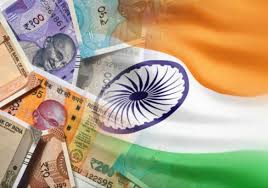
India’s current account deficit (CAD) for the July-September quarter of 2024 revealed a nuanced economic picture, highlighting the resilience of its service exports amidst widening trade deficits. The Reserve Bank of India (RBI) reported a CAD of $11.2 billion, equivalent to 1.2% of GDP, slightly lower than the $11.3 billion deficit (1.3% of GDP) in the same period last year. This balance underscores the growing importance of India’s service sector as a stabilizing factor in its external accounts.
Rising Service Exports: A Key Counterbalance
India’s net service receipts surged to $44.5 billion in the July-September quarter, up from $39.9 billion a year ago. Services such as IT, business solutions, travel, and transportation continued to perform robustly, buoying overall exports. The service sector remains a cornerstone of India’s economic strength, with increasing global demand for digital and technology-driven solutions playing a pivotal role. According to DBS Bank’s Radhika Rao, “A strong service trade surplus continues to be an important counterweight to the wider goods shortfall.”
Private transfer receipts, primarily remittances from overseas Indian workers, also rose significantly to $31.9 billion, compared to $28.1 billion in the previous year, further supporting the current account.
Merchandise Trade Deficit Woes
Despite the positive momentum in services, the widening merchandise trade deficit remains a concern. For the July-September quarter, the trade deficit expanded to $75.3 billion, compared to $64.5 billion in the same period last year. The record-high monthly trade deficit of $37.84 billion in November, driven by a surge in gold imports and declining exports due to weakening global demand, signals potential headwinds for the current account in the coming months.
The government is reportedly revisiting policies to address the gold import surge, which has exacerbated the trade imbalance and contributed to the depreciation of the rupee. The weakening currency, coupled with global economic uncertainty, poses challenges for India’s external accounts.
Balance of Payments and Future Outlook
India’s Balance of Payments (BoP) showed a surplus of $18.6 billion in the July-September quarter, a notable improvement from the $2.5 billion surplus in the same quarter last year. However, analysts caution that the October-December period may see a deep negative BoP, driven by the record trade deficit and slowing capital inflows.
Economists project the CAD could balloon to 2.5%-2.7% of GDP in the current quarter, underlining the need for policy measures to stabilize external accounts. Aditi Nayar of ICRA noted that while short-term challenges persist, structural reforms and diversified export strategies are essential for sustained economic stability.
India’s external accounts reflect a dual narrative of strength and vulnerability. The booming service sector and rising remittances offer a buffer against the growing merchandise trade deficit. However, strategic interventions, including managing imports, fostering export diversification, and leveraging the service sector’s potential, are critical for maintaining economic resilience in a volatile global environment.
(Source:www.theprint.in)
Rising Service Exports: A Key Counterbalance
India’s net service receipts surged to $44.5 billion in the July-September quarter, up from $39.9 billion a year ago. Services such as IT, business solutions, travel, and transportation continued to perform robustly, buoying overall exports. The service sector remains a cornerstone of India’s economic strength, with increasing global demand for digital and technology-driven solutions playing a pivotal role. According to DBS Bank’s Radhika Rao, “A strong service trade surplus continues to be an important counterweight to the wider goods shortfall.”
Private transfer receipts, primarily remittances from overseas Indian workers, also rose significantly to $31.9 billion, compared to $28.1 billion in the previous year, further supporting the current account.
Merchandise Trade Deficit Woes
Despite the positive momentum in services, the widening merchandise trade deficit remains a concern. For the July-September quarter, the trade deficit expanded to $75.3 billion, compared to $64.5 billion in the same period last year. The record-high monthly trade deficit of $37.84 billion in November, driven by a surge in gold imports and declining exports due to weakening global demand, signals potential headwinds for the current account in the coming months.
The government is reportedly revisiting policies to address the gold import surge, which has exacerbated the trade imbalance and contributed to the depreciation of the rupee. The weakening currency, coupled with global economic uncertainty, poses challenges for India’s external accounts.
Balance of Payments and Future Outlook
India’s Balance of Payments (BoP) showed a surplus of $18.6 billion in the July-September quarter, a notable improvement from the $2.5 billion surplus in the same quarter last year. However, analysts caution that the October-December period may see a deep negative BoP, driven by the record trade deficit and slowing capital inflows.
Economists project the CAD could balloon to 2.5%-2.7% of GDP in the current quarter, underlining the need for policy measures to stabilize external accounts. Aditi Nayar of ICRA noted that while short-term challenges persist, structural reforms and diversified export strategies are essential for sustained economic stability.
India’s external accounts reflect a dual narrative of strength and vulnerability. The booming service sector and rising remittances offer a buffer against the growing merchandise trade deficit. However, strategic interventions, including managing imports, fostering export diversification, and leveraging the service sector’s potential, are critical for maintaining economic resilience in a volatile global environment.
(Source:www.theprint.in)





